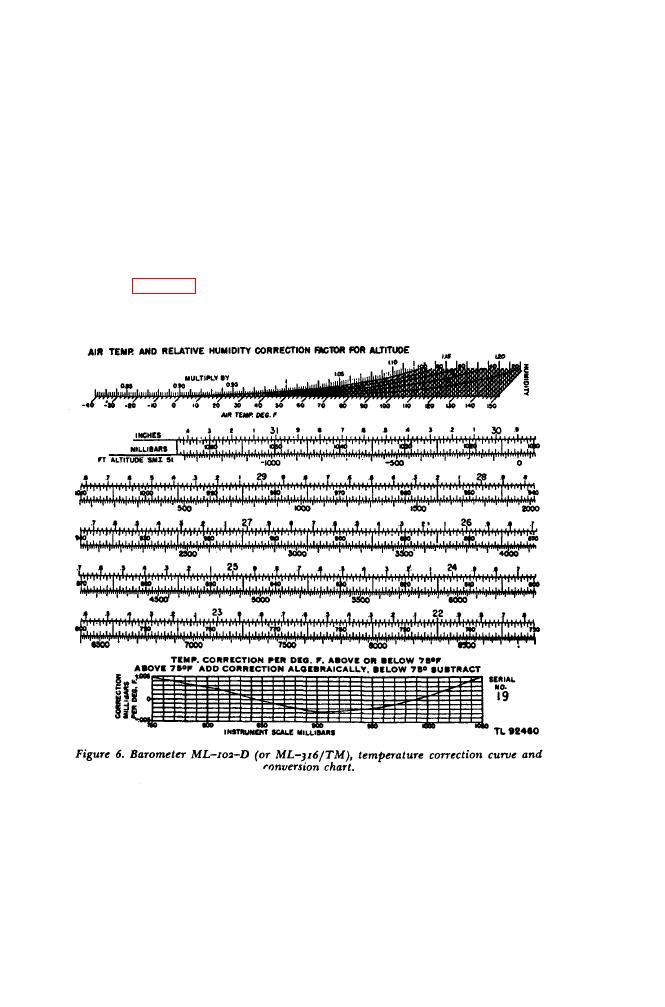
2. If the temperature of the instrument is changed
suddenly by an amount exceeding
10 F., wait 1 hours before taking a reading.
a. General. (1) The dial of these barometers is graduated in half-
millibar intervals and is calibrated for approximately two revolutions
of the pointer.
(2) Barometer ML-102 -D covers a range from 106 5 to 745 millibars
on two scales. Since each dial is individually calibrated to its respective
pressure sensitive cell, the crossover point from the outer to the inner
scale is between 880 and 920 millibars,
(3) Barometer ML-31 6/TM covers a range from 1 06 5 to 610 milli-
bars on two scales. The crossover point from outer to the inner scale
occurs between 825 and 855 millibars.
(4) In reading the scales, estimate the reading to the nearest tenth
millibar.
the outer scale. Assuming that the pointer has made one revolution
of the dial, the reading is 83 9.4 millibars.
b. Temperature correction. (1) Barometers ML- 1 0 2- D and ML-
3 1 6/TM are designed so that the temperature correction at 75 F. is
zero. At temperatures above and below this value the indications of
the barometer are slightly affected by temperature. However, this cor-
rection need not be applied unless it exceeds one-tenth (0.1) millibar,
12



 Previous Page
Previous Page
